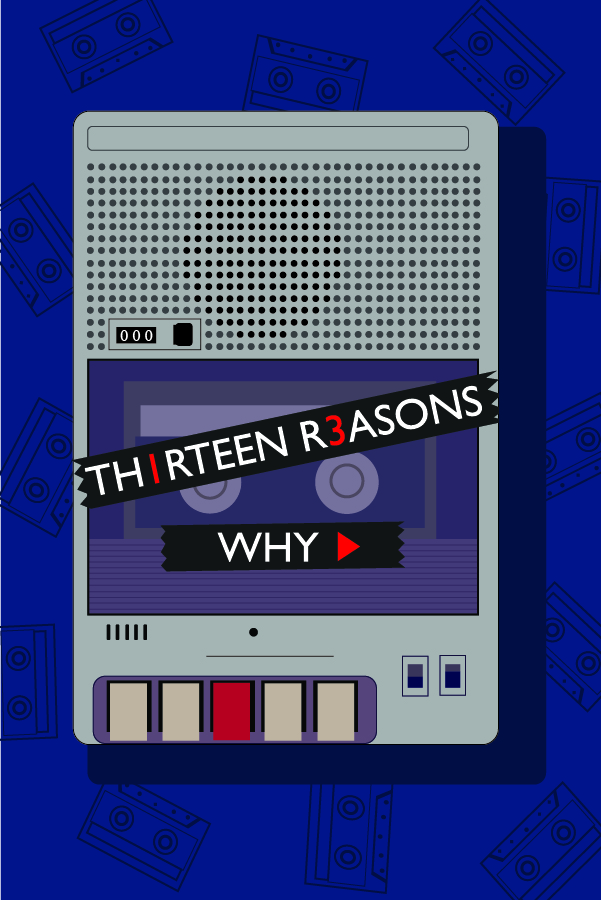
Content about mental health and suicide shouldn’t be restricted just because it’s on TV
 Coming to the end of 2017, it’s safe to say that almost everyone has seen or at least heard of the Netflix series “13 Reasons Why.” For those who don’t know, before the series was released, it was a book, published in 2007. The show was added to Netflix on March 31, 2017, and it was a popular subject of discussion on social media thereafter. Not even a month later, critics and mental health professionals were calling it dangerous, saying the series glorifies suicide.
Coming to the end of 2017, it’s safe to say that almost everyone has seen or at least heard of the Netflix series “13 Reasons Why.” For those who don’t know, before the series was released, it was a book, published in 2007. The show was added to Netflix on March 31, 2017, and it was a popular subject of discussion on social media thereafter. Not even a month later, critics and mental health professionals were calling it dangerous, saying the series glorifies suicide.
The story focuses on the hardships of its main character, Hannah, who was suicidal. Real people have faced similar experiences, which can severely impact their mental states. It’s possible for mental illness to develop due to one specific conflict. There are issues with this aspect of the show that have been discussed in several articles.
“We don’t get a feel for her internalization until she kills herself,” Dr. Victor Schwartz, the medical director of the JED Foundation, said in an NBC article detailing mental health experts’ objections to the show.
Although viewers may not get a clear statement from Hannah about feeling depressed or suicidal, they do see changes occur in her behavior and personality. In the beginning of the series, she’s a cheerful teenage girl. She’s smiling, laughing and enjoying life with her close friends. But as the series continues, we see a gradual change. Her facial expressions slowly drop so that she hardly ever smiles anymore. We watch her cry frequently, and we can see that she’s hurting.
Of course, we don’t get a straight answer from Hannah about how she’s truly feeling, but we don’t get a clear answer like that in real life, either. Mental illness isn’t something that can always be seen from an outsider’s perspective, but we can see signs that someone isn’t feeling like themselves. Their body language, their tone of voice and even the words they choose can all hint to those on the outside that something isn’t okay. Characters in “13 Reasons Why” could see that Hannah was hurting and being poorly treated — but no one thought to ask how she felt. This leads to the next controversial issue in the show.
When someone takes his or her own life, it’s no one else’s fault. Critics have issues with the fact that Hannah leaves behind tapes to be passed between the people who caused her pain. Experts say that this romanticizes suicide, giving the audience the idea that a person has the power to impact others’ mental health after death — merely out of revenge.
Hannah’s harsh language and angry tone pin the blame on other people, which isn’t the way to go about the issue. However, these tapes can also be interpreted as a death note — a way for Hannah to sincerely explain how the situation she was put in had a heavy impact on her life. With that said, suicide shouldn’t be looked at as the solution.
“We wanted it to be very clear that there is nothing, in any way, worthwhile about suicide,” said Brian Yorkey, the show’s creator.
Mental health professionals have also criticized Hannah’s death scene for being “taken too far” and being excessive for television. But her suicide isn’t meant to be easy to watch — nothing about mental illness is easy. The scene is not something to be taken lightly, and the reality of suicide shouldn’t be censored. No one deserves to die alone, in that amount of pain, and that’s what should be taken from the scene. The show reminds us that there are ways to prevent this decision from being made and that it’s important to pay attention to ourselves and the people around us.
The show’s story is meant to raise questions and open up the dialogue on many topics, including overall mental health. The comments it has received have been more on the negative side, and I think it’s because of stigma: how graphic the show is, and how this makes viewers uncomfortable. That uneasy feeling comes from growing up in an environment that avoids the topic of mental health in conversation. Look past the surface of the story, and dig deeper for what it’s trying to communicate.
Written by: Jolena Pacheco — mspacheco@ucdavis.edu
Disclaimer: The views and opinions expressed by individual columnists belong to the columnists alone and do not necessarily indicate the views and opinions held by The California Aggie.



